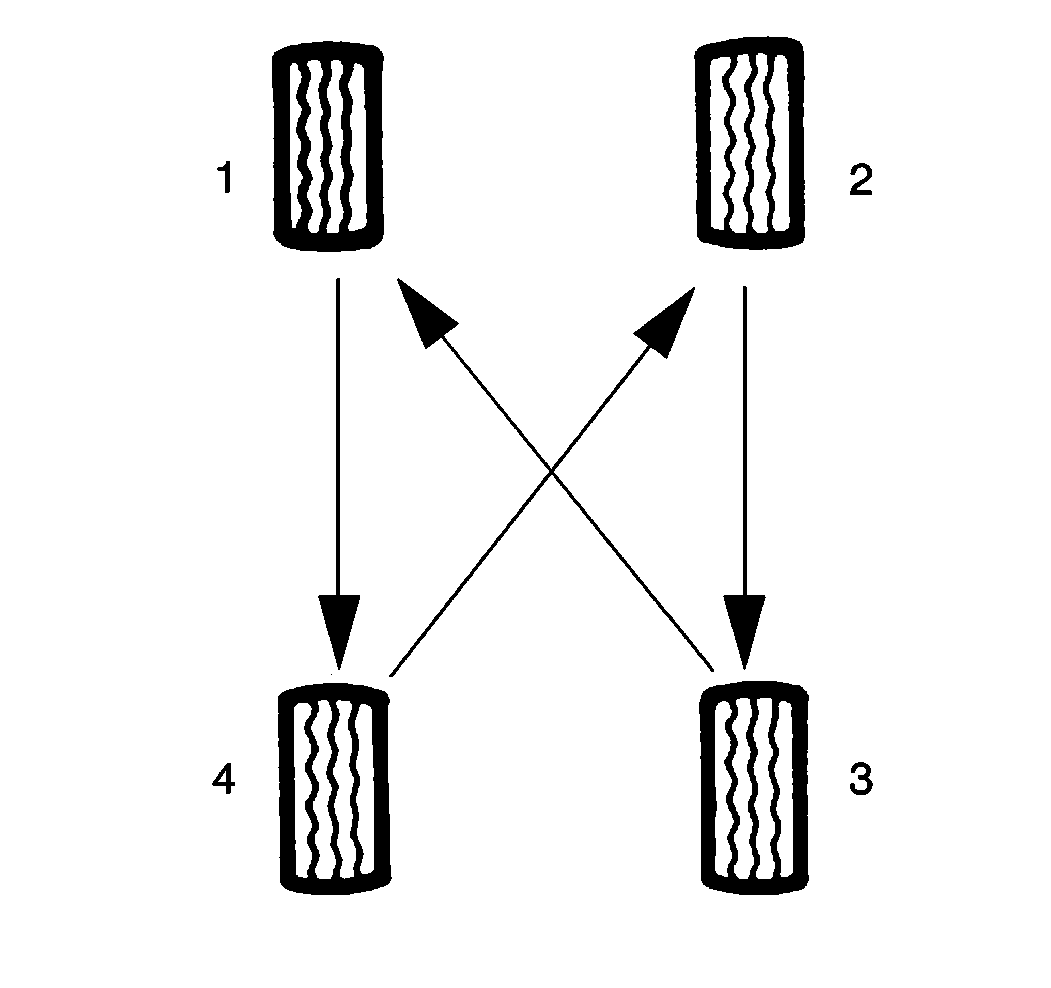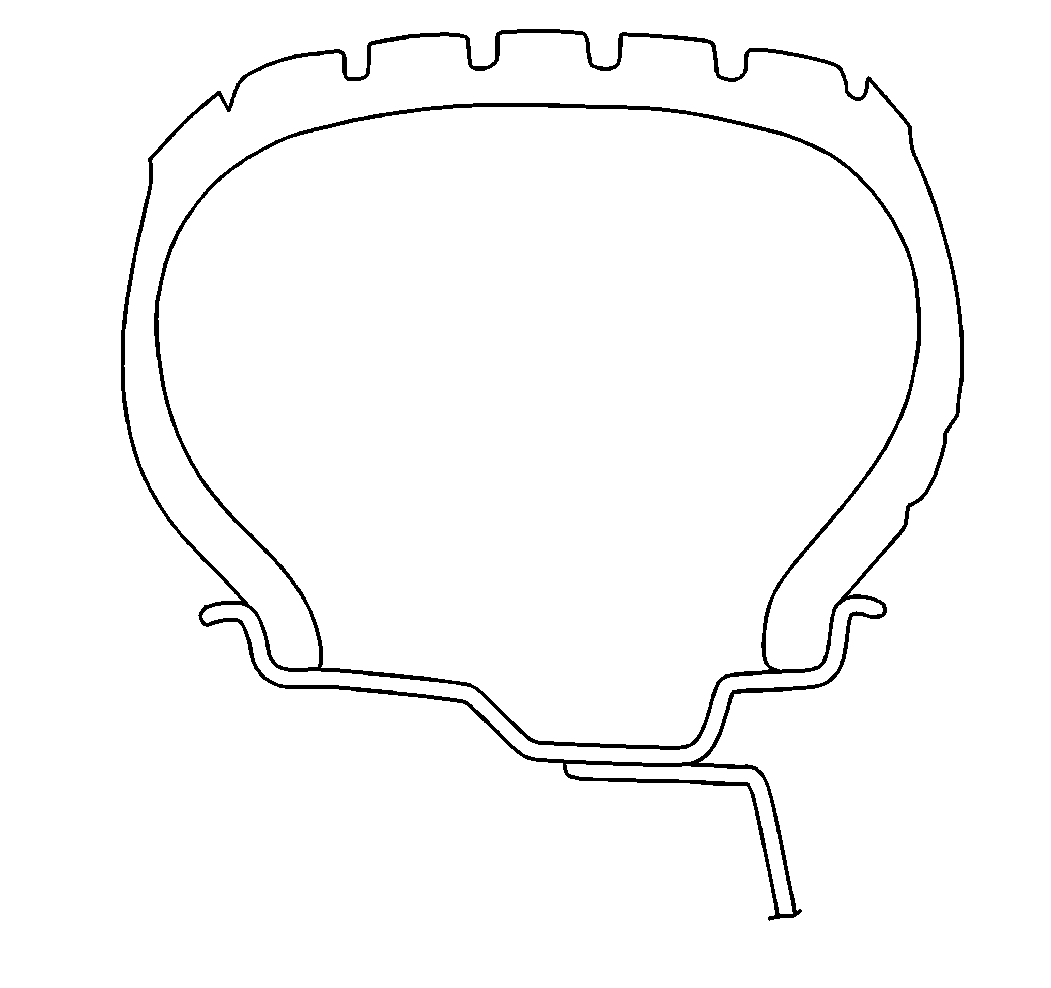Tire Rotation Procedure

In order to equalize wear, rotate tire and wheel assemblies at intervals specified. In addition to the scheduled rotation, the tire and wheel assemblies should also be rotated whenever uneven tire wear is noticed.
Due to their design, radial tires tend to wear faster in the shoulder area particularly in front positions. Radial tires in non-drive locations may develop an irregular wear pattern that can increase tire noise if not rotated. This makes regular rotation especially necessary.
After rotation, be sure to check the wheel nuts for fastener tightening specification and adjust the inflation pressure.
Tire Rotation Wheel Runout

Wheel runout should be measured with an accurate dial indicator. Measurements may be taken with the wheel installed on the vehicle, or off the vehicle using an accurate mounting surface such as on a wheel balancer. Measurements may also be taken with or without the tire mounted on the wheel.
Radial runout (2) and lateral runout (1) should be measured on both the inboard and the outboard rim flanges. With the dial indicator firmly in position, slowly rotate the wheel one revolution and record the total indicator reading. If any measurement exceeds specifications, and there is a vibration that wheel balancing will not correct, the wheel should be replaced. Disregard any indicator readings due to welds, paint runs, scratches, etc.
The following are measurements for steel wheels:
| • | Radial runout 1.01 mm (0.040 in). |
| • | Lateral runout 1.14 mm (0.045 in). |
The following are measurements for aluminum wheels:
| • | Radial runout 0.76 mm (0.030 in). |
| • | Lateral runout 0.76 mm (0.030 in). |
